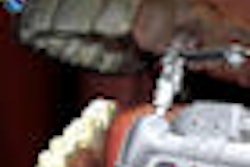The University of Maryland Dental School is the first U.S. dental school to utilize an interactive online educational program that enables students to create virtual reality versions of themselves that can attend classes and experience other online aspects of the dental school program, according to the university.
The faculty this year introduced educational applications of Second Life, a 3D online game. Students can venture into Maryland's virtual dental school to "experience" aspects of dentistry ranging from lessons in best dental hygiene practices to infection control and anatomy.
The software allows students to control a Second Life figure of themselves, called an avatar, by mouse and keyboard or voice-controlled headsets. Although students can design the appearance of their avatars, the virtual school has a strict code of behavioral conduct, the university said.
In the fall, the virtual dental school option will be part of orientation for first-year students, said Carroll-Ann Trotman, B.D.S., M.S., associate dean for academic affairs.
The virtual dental school tool can be used to help reinforce learning about dental issues such as preventive care, overcoming fear about dental visits, enhancing collaboration with other dentists anywhere at anytime, delivering student and faculty lectures, and addressing various competences related to dental courses, according to Dr. Trotman.
"What we are doing is developing a 3D virtual world that we can use to engage in global outreach, teaching, and perhaps collaboration," Dr. Trotman stated in a press release. "So far, it has been reasonably well received by both students and faculty."
Julie Gilliam, the school's instructional technology specialist who is creating the virtual programs, said that use of the second life tool "is not just a game." Rather it is a "solid system that a lot of people are using," she said, including entertainers and those in business and religion and law and business colleges, adding that more than 200 universities and colleges are using it for educational purposes.
"What's most awesome about this is the ability to simulate activities that may include greeting a new patient or taking a patient's health history," Gilliam said.
Like the nine-story University of Maryland Dental School building in downtown Baltimore, the Maryland virtual dental school is made of brick and glass. But unlike the real campus, the virtual one is located on a scenic island. The horizontally expansive, virtual three-story structure houses clinics and laboratories, lecture halls, a library, and interactive posters and paintings. A separate building also houses a virtual laboratory.
In any single use, as many as 75 students can operate within the virtual dental school, according to the university.
Copyright © 2009 DrBicuspid.com



















